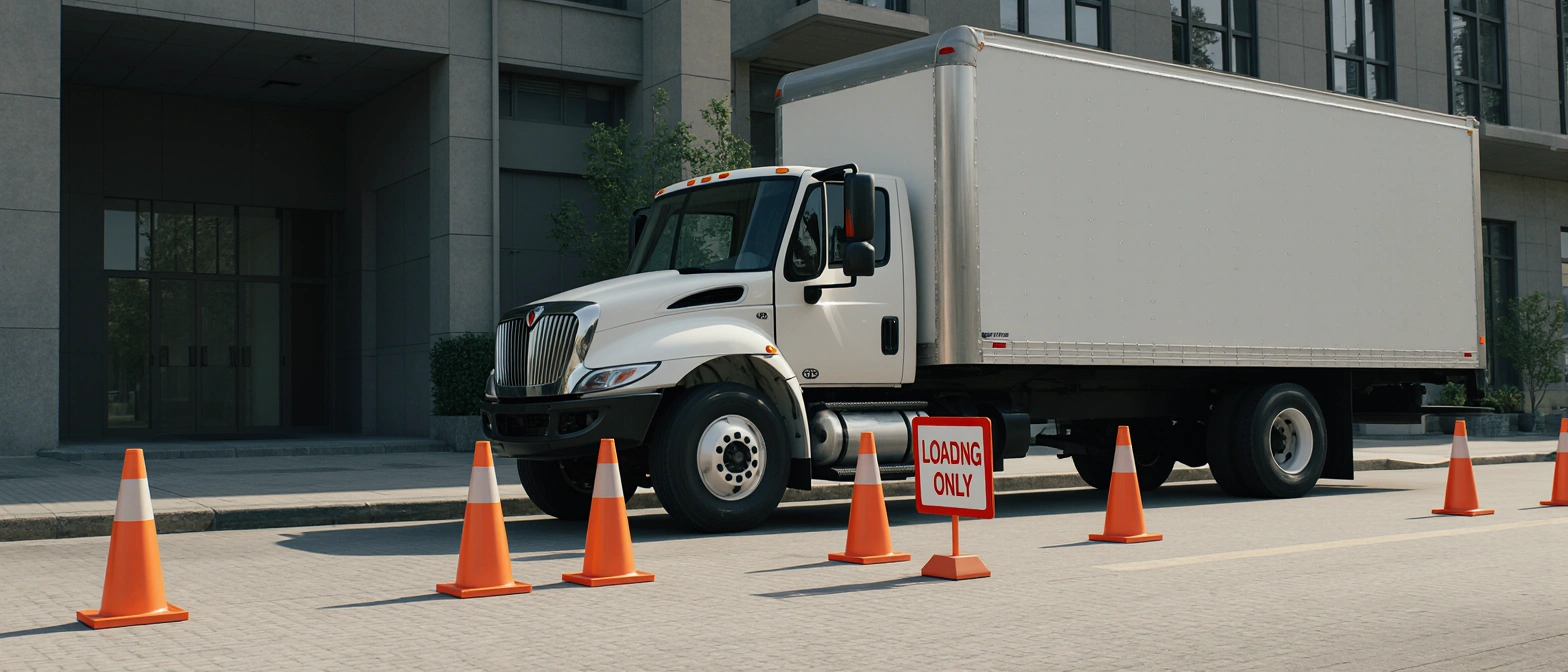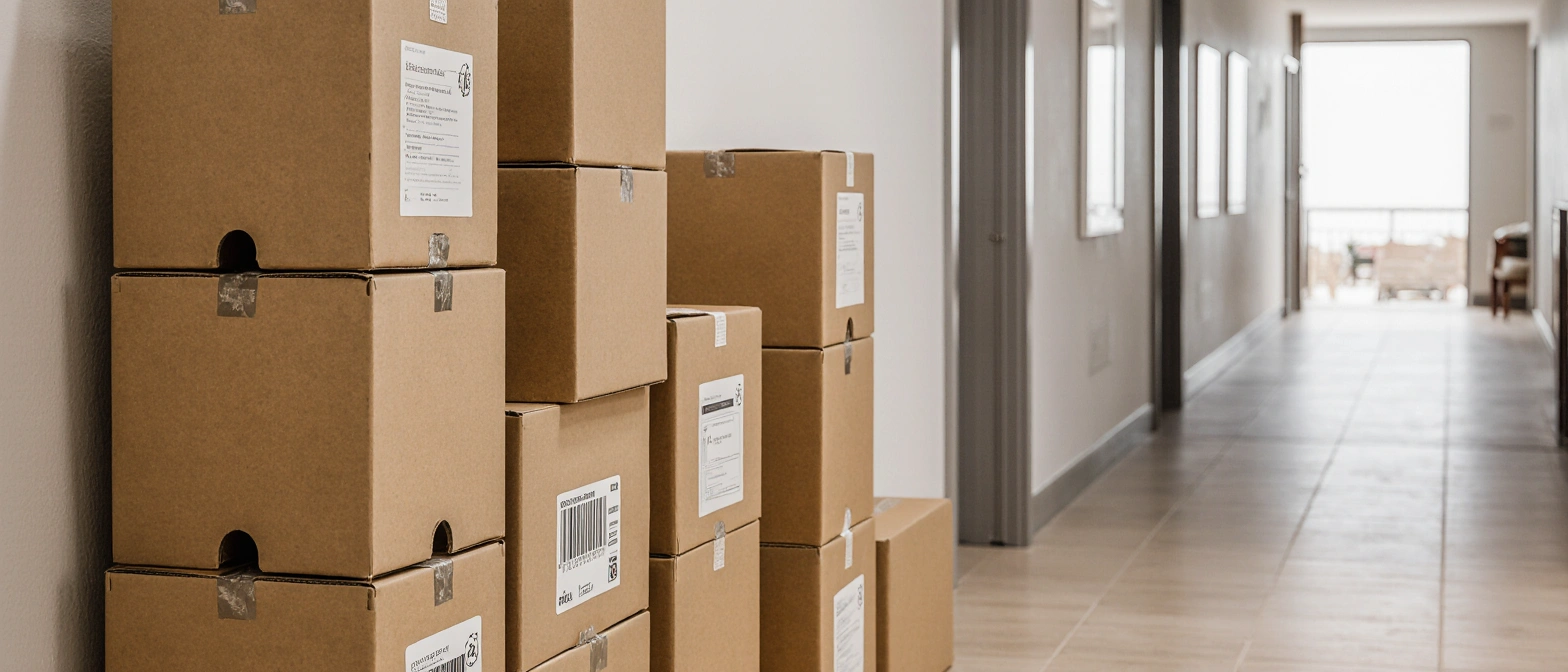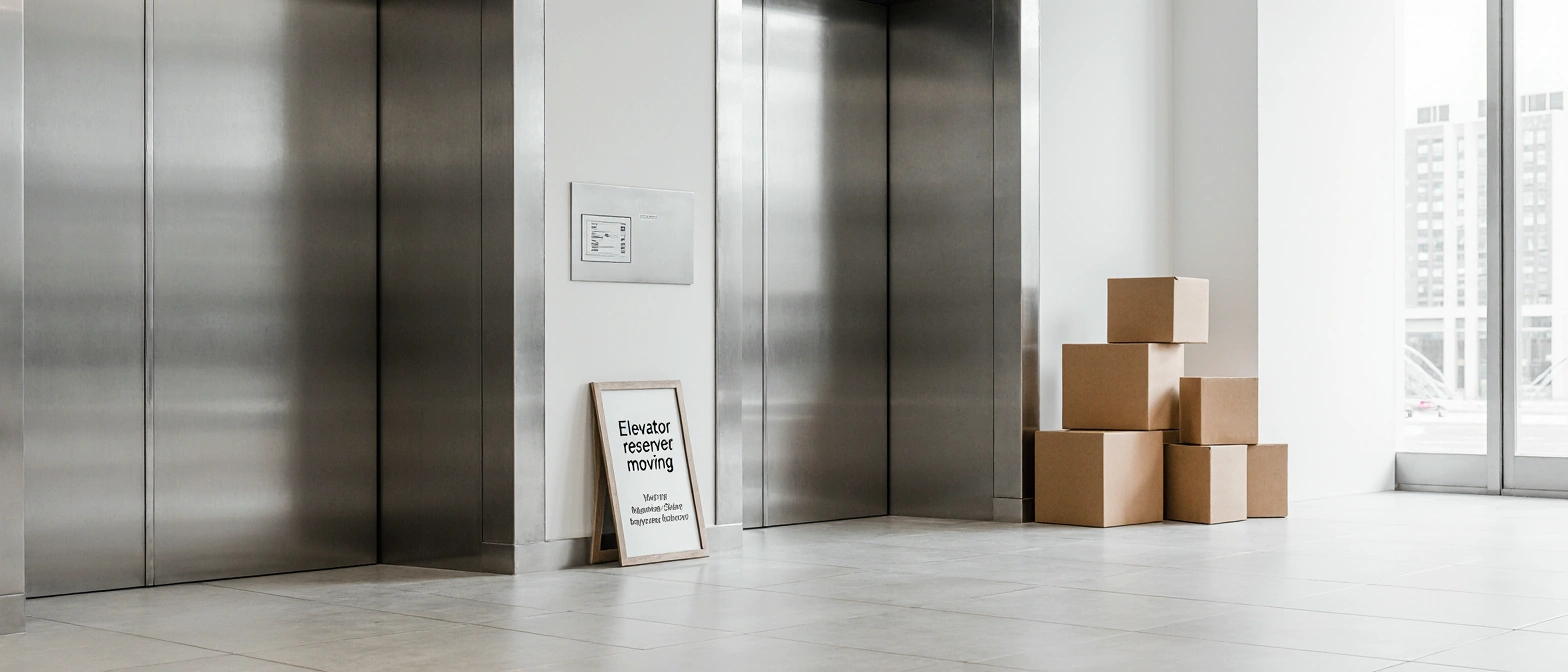Apartment moves look “smaller” than house moves — less space, shorter distance, fewer rooms.
But the second you add elevators, tight hallways, strict building rules, neighbors and street parking, the level of difficulty jumps.
If you want your moving day to feel organized instead of chaotic, you have to plan not only boxes and furniture, but also the building itself: elevators, doors, loading zones and management rules.
Below is a practical guide to help you move in or out of an apartment smoothly, without fights with the elevator or angry neighbors.
Start With the Building Rules, Not With the Boxes
Most people start packing and only think about the building a few days before the move. For apartments, it should be the opposite.
Before you buy tape and boxes, find out:
- On which days and hours are moves allowed?
- Do you have to book the elevator in advance?
- Is there a move-in / move-out fee or deposit?
- Does the building require a Certificate of Insurance (COI) from your movers?
- Are there restrictions on weekend moves or evening noise?
A short email or call to the building manager can save you from fines, delays and very awkward conversations on moving day.
Talk to Building Management Early
As soon as you have a target moving date, reach out to:
- building manager or superintendent,
- front desk or concierge,
- HOA/condo office (if you own).
Key questions to ask
- What are the approved moving hours on weekdays and weekends?
- Is there a service elevator, and how do I reserve it?
- Do you charge a move-in / move-out fee or require a refundable deposit?
- Do you need a COI from the moving company? If yes, what exactly has to be on it (company name, dollar amounts, wording)?
- Where can a moving truck or van park legally, and how close can it get to the entrance?
- Do you provide elevator pads or floor protection, or should my movers bring their own?
If your building needs a COI or any specific document, tell your moving company as soon as you book.
When you move with us at United Prime Van Lines, we can prepare and email the COI directly to your building so no one is arguing about paperwork at the front desk on moving day.
Elevators: Your Biggest Bottleneck (and Best Friend)
In apartment moving, the elevator is often the single most important resource. It can save hours — or waste them.

Service elevator vs passenger elevator
If your building has a service elevator, use it. Every time.
Service elevators are usually:
- deeper and wider,
- designed for carts and large pieces,
- less stressful for residents because you’re not blocking the main car.
If there’s only a passenger elevator:
- Ask if it can be put on service mode (held on one floor for loading).
- Make sure walls and rails are protected with pads or blankets.
- Don’t overload it with one giant piece — better two smaller trips than a stuck elevator and a building-wide problem.
Reserve a realistic elevator window
Most buildings offer a 2–4 hour window for moves. To make it count:
- Have everything packed before your time window begins. Moving during your elevator slot is for loading, not taping boxes.
- Keep one person near the elevator to:
- bring the next load as soon as it arrives,
- send the elevator back quickly,
- make sure doors are not standing open for nothing.
- Stage boxes and furniture close to the door, but not blocking hallways or exits.
Protect the elevator and common areas
Good movers don’t just carry; they protect. That matters a lot in apartments.
Ask your crew to:
- hang moving pads inside the elevator,
- cover sharp furniture edges,
- pad door frames and tight corners with blankets or corner guards.
It’s not just about being nice. Scratches and dents in elevators and hallways can turn into repair bills, arguments with management and delays getting your deposit back.
Parking and Access for the Moving Truck
Even the best crew can lose an hour if the truck is circling the block. Parking is a real part of your move plan, especially in busy neighborhoods.

Walk the area before moving day
A few days before your move, do a short “scouting mission”:
- Where can a truck realistically park near your building?
- Are there No Parking, loading zone or “Tow Away” signs?
- How many steps or ramps are there from the curb to the entrance?
- How far is the walk from the truck to the elevator or stairs?
If your city requires temporary street parking permits for moving trucks, apply early.
When you book with United Prime Van Lines, let us know what the access looks like:
- tight street or easy private driveway,
- underground garage height limits,
- long carry from the truck to the building.
We’ll plan the right truck size, crew and timing so you’re not surprised by “we can’t fit here” on moving day.
Inside the Building: Hallways, Doors and Neighbors
In apartments, you’re not just moving through your own space. You’re moving through shared space that other people still need to use.
Keep hallways and exits clear
On moving day:
- Don’t build a wall of boxes right outside your door.
- Keep fire exits, stairwells and hallways open.
- Move items to the truck or elevator staging area quickly instead of letting them pile up in common spaces.
It’s safety, not just etiquette — and it keeps management off your back.
Protect doors and corners
Entry doors, door frames and corner walls take a beating during apartment moves. A little protection goes a long way:
- Ask your movers to wrap door frames and tight corners with moving blankets.
- Point out tricky turns or narrow spots so the crew can plan how to angle large items.
- Take your time with the bulky pieces (sofa, dresser, wardrobe) instead of forcing them through.
A few extra minutes here is cheaper than repainting or repairing damaged walls later.
Be considerate of noise and timing
Even if your building technically allows moves until 8–9 p.m., your neighbors may not be thrilled about heavy banging on the walls at that time.
Whenever possible:
- Do the heaviest and loudest work earlier in the day.
- Avoid dragging furniture on the floor — lift or use dollies and sliders.
- Keep music and shouting to a minimum in hallways and stairwells.
You’re building a relationship with your new neighbors from day one. It’s easier to ask for a favor later if your move-in didn’t feel like an invasion.
Packing Strategy for Apartment Moves
Packing for an apartment isn’t just about filling boxes. It’s about fitting through doors, into elevators and around tight corners.

Think compact and stackable
- Make medium boxes your default size. They’re easier to carry and stack in an elevator.
- Avoid huge, overloaded boxes that require two people and barely fit through the door.
- Pack by room, and label clearly:
- “Living room – books,”
- “Bedroom – clothes,”
- “Kitchen – dishes,”
- “Bathroom – towels & toiletries.”
This helps both movers and your future self when you’re unpacking.
Measure your large furniture in advance
If you own big pieces like:
- a wide sectional,
- a tall wardrobe,
- a long dresser,
grab a tape measure. Check:
- the width and height of the furniture,
- the width of doorways,
- the size of the elevator opening and depth of the cab,
- any tight turns in hallways.
Sometimes it’s smarter to:
- remove legs, doors or arms from furniture,
- separate a sectional into pieces,
- take doors off hinges temporarily.
When you book with United Prime Van Lines, you can tell us about any oversized items. We’ll bring the right tools and plan the best way to move them safely without destroying your walls (or the furniture).
Keep your essentials with you
In an apartment full of similar boxes, it’s very easy to lose something important. To avoid that:
- Keep documents, jewelry, cash, small electronics and medication with you, not in the truck.
- Pack a separate “First Night / Essentials” box or duffel that travels in your car.
Include in your essentials:
- bedding and pillows,
- a set of towels,
- basic toiletries and any daily meds,
- minimal dishes and cutlery,
- chargers, power strip, maybe your router,
- a change of clothes for a couple of days.
Label it boldly:
“FIRST NIGHT – OPEN ME FIRST”
You’ll thank yourself when you’re tired and don’t feel like hunting for your toothbrush.
Don’t Forget the New Building’s Rules
If you’re moving from one apartment to another, you have two sets of rules to care about — old building and new building.
A couple of weeks before the move:
- Contact your new building’s management and ask the same questions you asked at the old one: moving hours, elevator reservations, fees, COI, parking.
- Reserve a move-in window for the service elevator.
- Confirm where your movers can park and how they should enter the building.
A great moving day looks like this:
- Morning: smooth move-out from the old apartment, no drama.
- Midday/afternoon: controlled move-in at the new building, elevator reserved and ready.
- Evening: your bed is set up, Wi-Fi works, and you’re not arguing with security about a truck blocking the entrance.
h2: Working With Professional Movers in an Apartment Building
Apartment moves are where professional movers can save you a lot of time and stress — even more than in some houses.
When you move with us at United Prime Van Lines, we can:
- Ask the right questions about elevators, parking and building rules before moving day.
- Provide COI and any required documents directly to your management office.
- Bring elevator pads, floor protection and corner guards so the building stays in good shape.
- Plan the loading order so that essentials, bed parts and key items are loaded last and unloaded first.
- Adjust on the fly if something changes — blocked loading area, busy elevator, last-minute rule surprises.
Instead of you fighting both furniture and building policies at the same time, we handle the moving logistics while you focus on decisions and details.
Quick Apartment Moving Checklist (Elevators & Access)
Use this as a simple “am I ready?” list before moving day:
- Talked to old and new buildings about moving hours, elevator reservations and fees.
- Reserved a service elevator (or time slot) where available.
- Confirmed where the truck can park and whether permits are needed.
- Measured big furniture and checked tight spots and elevator size.
- Planned protection for elevator, doors and hallway corners.
- Packed in compact, labeled boxes instead of random bags.
- Prepared an Essentials / First Night box or bag.
- Kept documents, valuables and medication separate and with you.
With this kind of preparation, an apartment move stops being a horror story about elevators and neighbors and becomes what it should be: a busy, but manageable day that ends with you actually sleeping in your new home — not fighting with tape at midnight.



